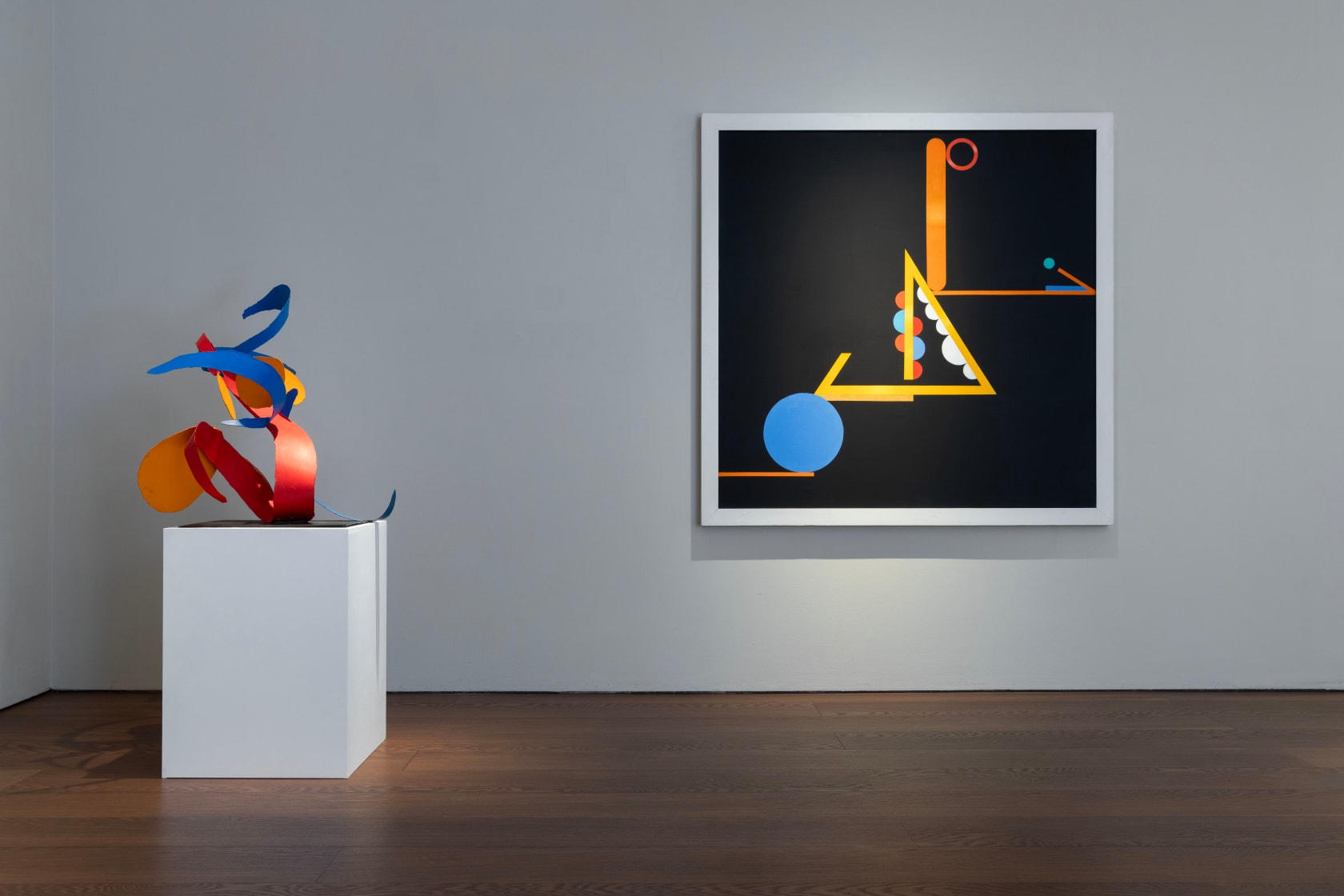


Jack Smith Touching on Black, 1992
Jack Smith (1928-2011) was a central figure in British painting from the early 1950s when he was renowned for his powerful realist works. Along with John Bratby, Edward Middleditch and Derrick Greaves, Smith was labelled a key member of the so-called 'Kitchen Sink' school, a label applied by the critic David Sylvester to suggest a unified group of campaigning Social Realists. However, Smith was never comfortable with the tag. His core concerns were always aesthetic - to do with light, form and pattern - rather than political, and by the late 50s his work moved towards the pure abstraction for which his career has subsequently been celebrated. Many of the paintings had musical titles and used hieroglyphics and script-like forms which implied, but at the same time denied a specific semiotic reading.
After being included in the Venice Biennale in 1956,. Smith won the first John Moores prize in 1957 and had a solo retrospective at the Whitechapel in 1959. His work has since been exhibited at the National Portrait Gallery, London; the Serpentine Gallery, London; Kettle’s Yard, Cambridge; Ikon Gallery, Birmingham; Museo Municipal, Madrid, and Pallant House Gallery, Chichester. Public collections include the Arts Council England; the National Gallery, Berlin; the Guggenheim Museum, New York; the Tate Gallery, London; The Art Gallery of New South Wales, Sydney; the Scottish National Gallery of Modern Art Edinburgh, and the Victoria and Albert Museum, London.
60 x 60 in
Touching on Black, 1992 is emblematic of British artist Jack Smith’s (1928-2011) interest in light as a vessel to explore abstraction. Smith has been a central figure in British painting since the early 1950s, when he was renowned for his powerful realist paintings. Along with John Bratby, Edward Middleditch, and Derrick Greaves, Jack Smith formed the core of the so-called ‘Kitchen Sink School’, a label casually applied by the critic David Sylvester to suggest a unified group of campaigning Social Realists. However, Smith was never comfortable with the tag. His core concerns were always aesthetic, to do with light, form, and pattern, rather than political, and by the late 1950s his work was moving towards the pure abstraction for which his career has subsequently been celebrated.
Smith found a system of signs that placed music as the very subject of his work. The predominantly black background is offset by harmoniously balanced shapes, with lines, circles, semi-circles, and complete triangles of brightly coloured oranges, blues, yellows, whites, and red capturing sound itself. His paintings need to be read to be understood and hence to be ‘heard.’ While Smith's ‘music’ is purely visual and emphatically silent, his painting is bold and vibrant, inviting but defying translation. They embody the paradox of a visual language which has no meaning, but also of visual music which makes no sound.


